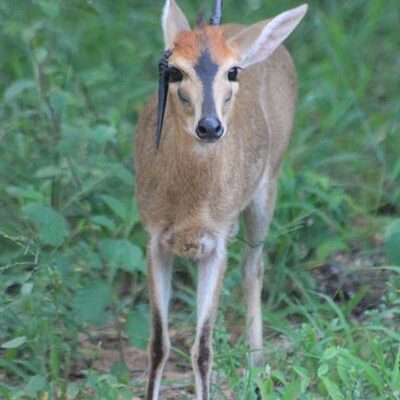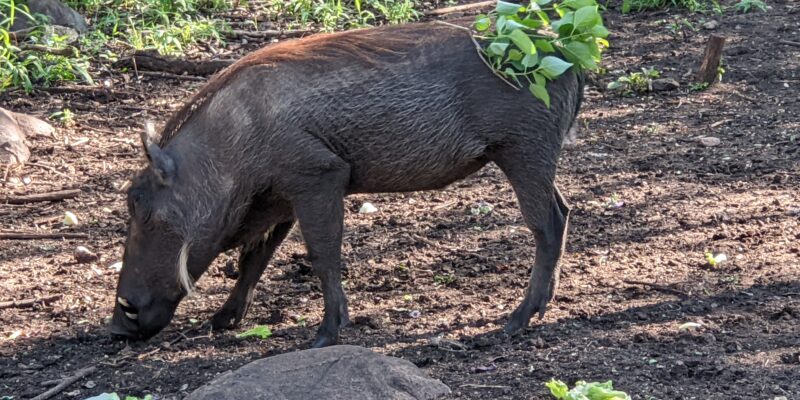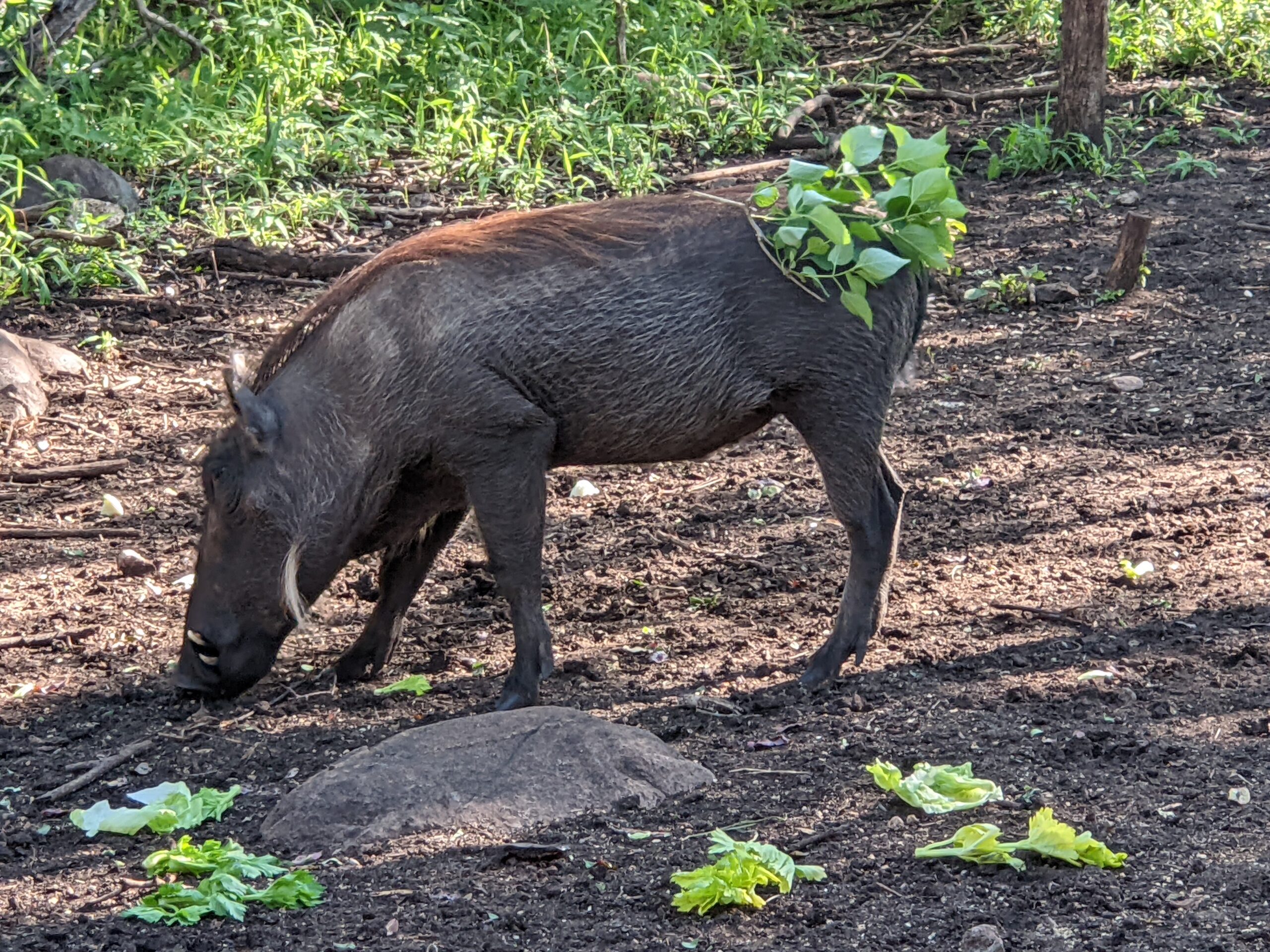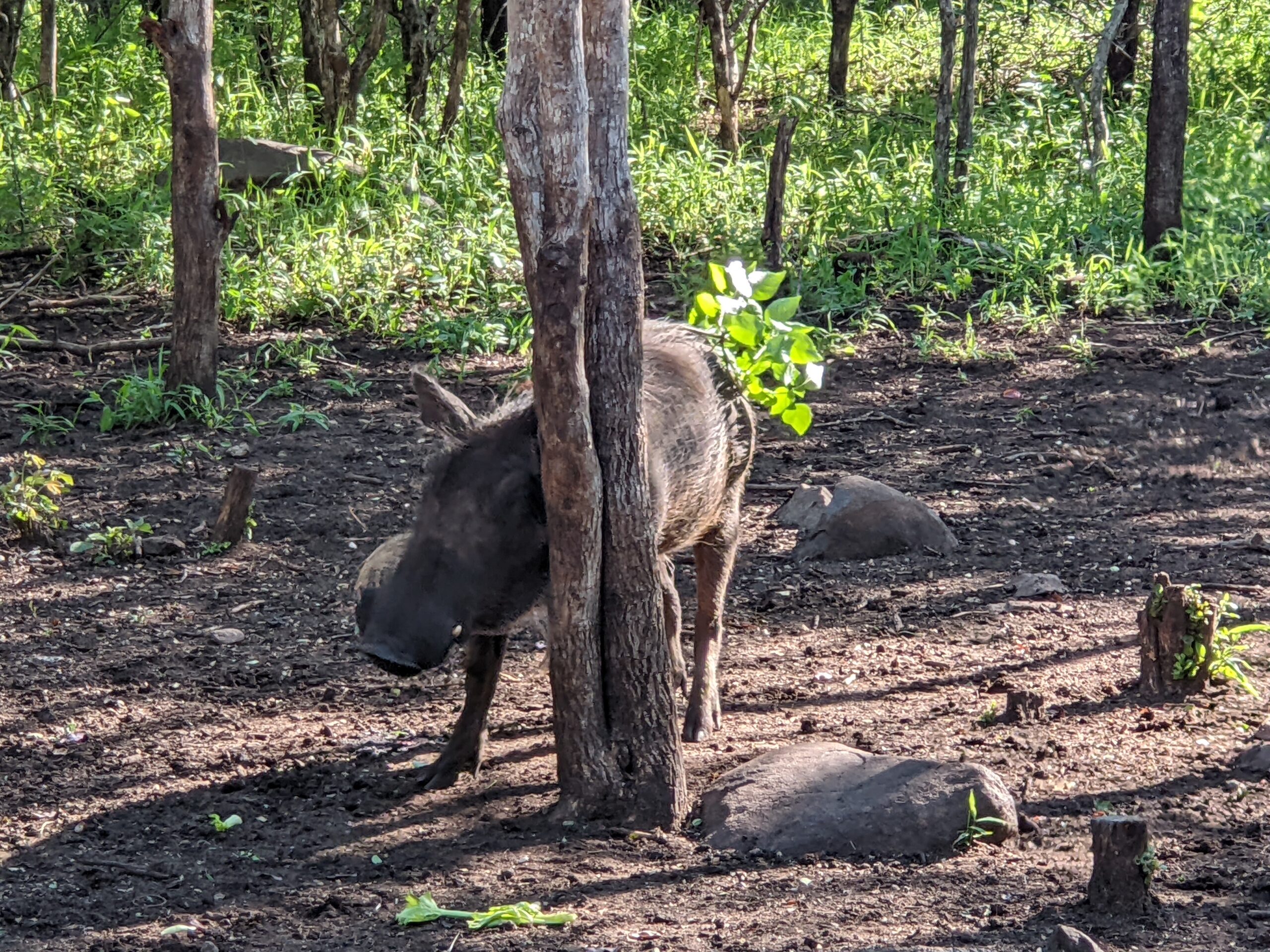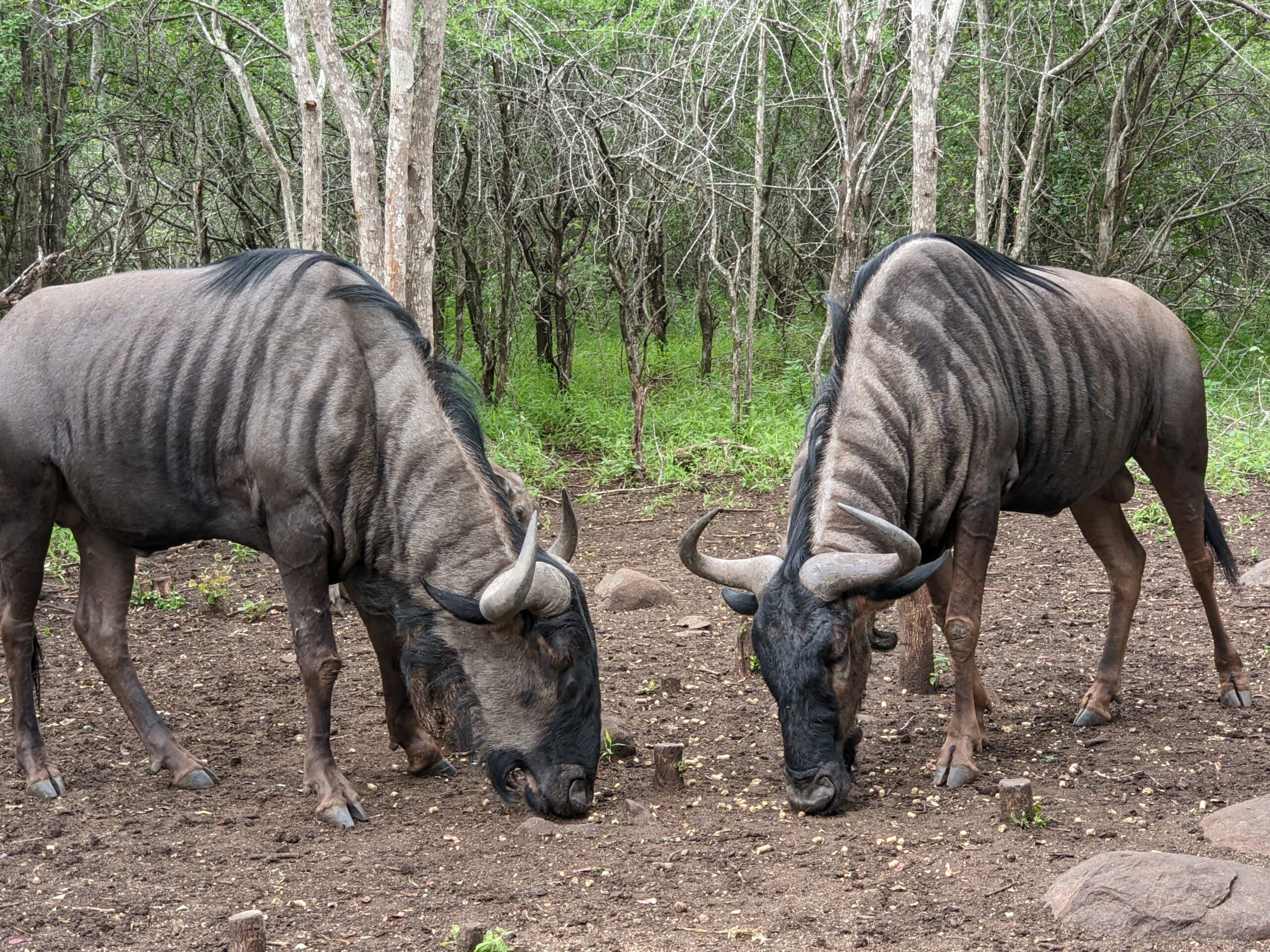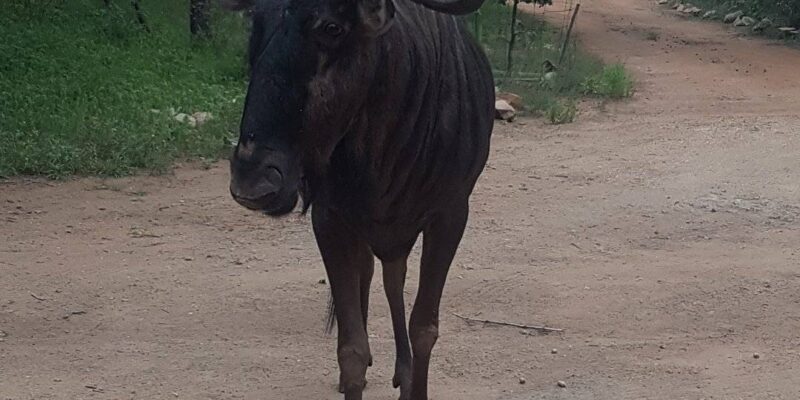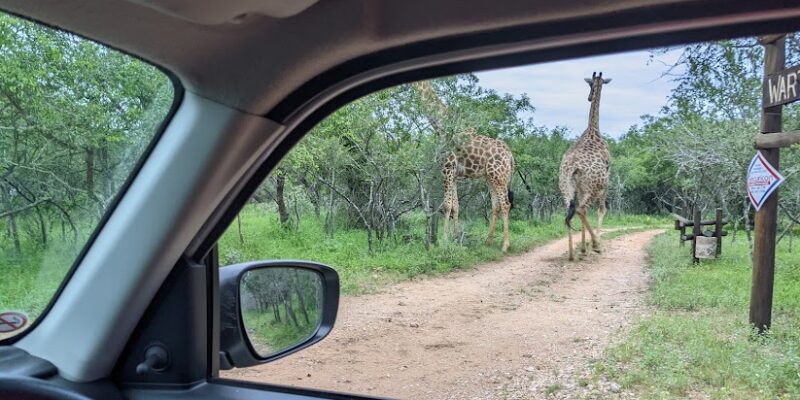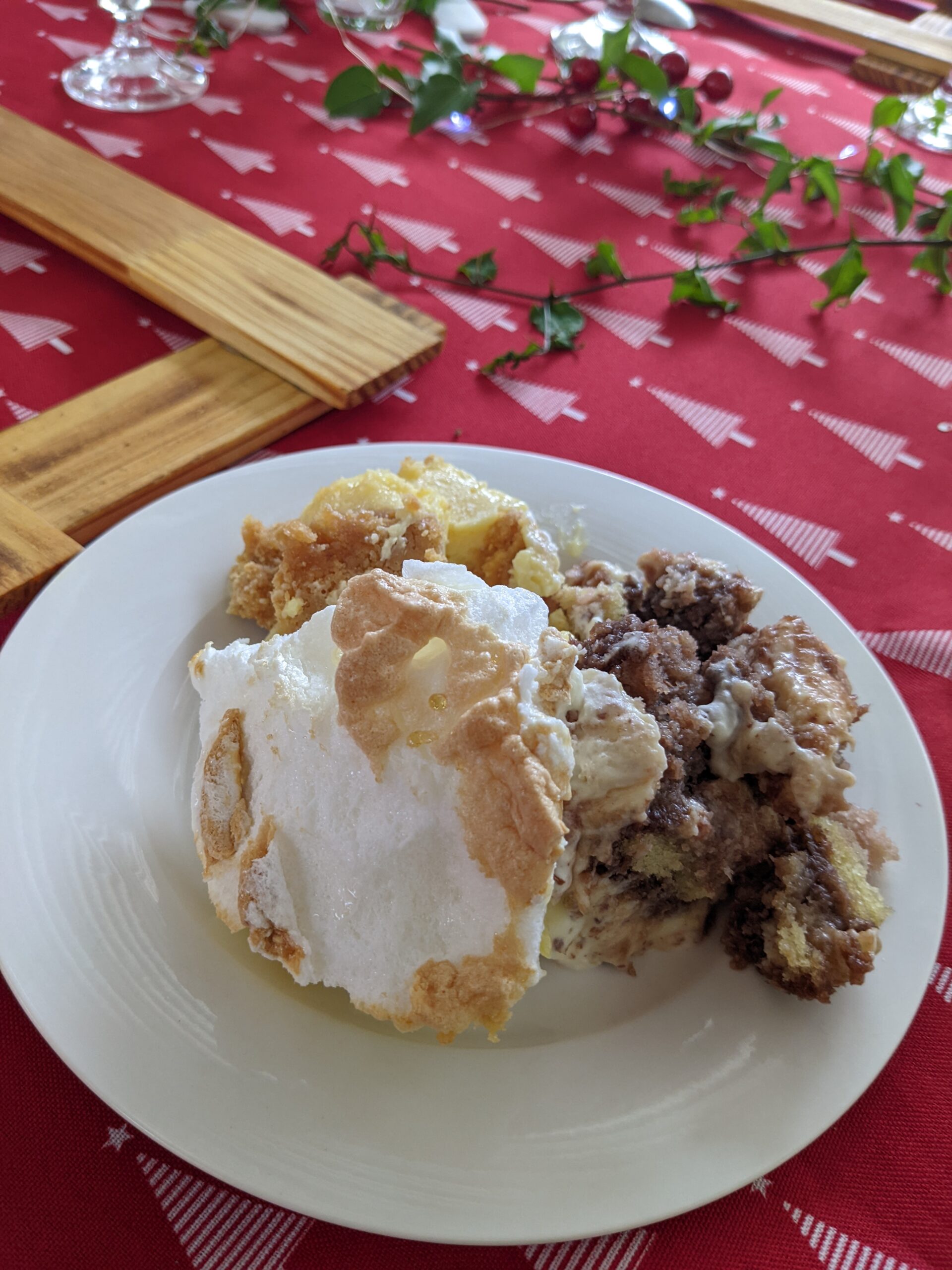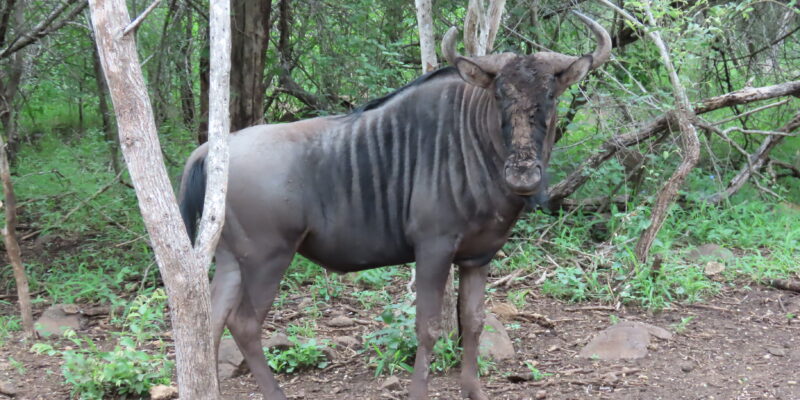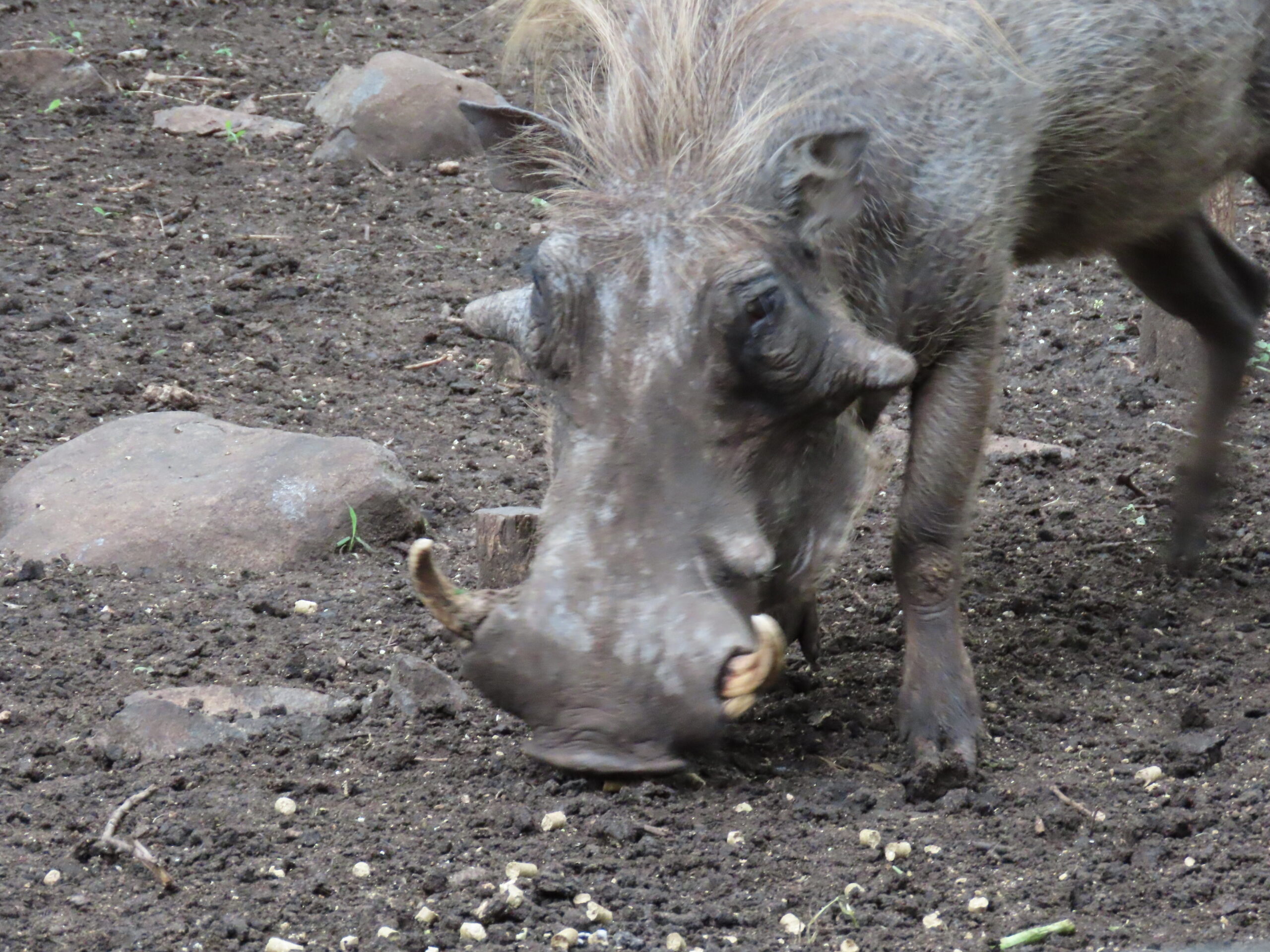
Living in the bush always provides opportunities for exciting and unique experiences. Days may pass before anything pops up, but ultimately, something special happens. In this case, it was more than special. It was terrifying!!!
As we were getting ready to go to Jabula last night instead of our usual Friday night, due to the New Year’s Eve party that we’re attending this evening, Tom stepped out onto the veranda to feed a bushbuck in his bare feet and underwear. (Privacy is easy since we are far from other bush houses and dense bush surrounds us on all sides). It was so hot and humid. He didn’t want to put on his clothes until we were ready to go out the door.
I was busy in the second bedroom where I keep my clothes, freshening up and changing for the evening. I heard Tom let out a “Whoa!”
I rushed outside to see what he had spotted. Fortunately, or unfortunately, (I couldn’t take a photo, nor did I see it. Now, you know what it was when I said it had slithered away. Nothing slithers like a snake.
It was a black mamba, the most venomous snake in Africa, described as follows from this site:
The black mamba has quite a reputation. It is one of the world’s deadliest snakes. It is the fastest land snake in the world and “the longest species of venomous snake in Africa and the second-longest in the world,” said Sara Viernum, a herpetologist based in Madison, Wisconsin. This snake’s potential danger has been the subject of many African myths, and it has been blamed for thousands of human deaths.
The black mamba’s reputation is not undeserved. “Black mambas are extremely venomous and very fast snakes,” Viernum said. They are highly aggressive when threatened, “known to strike repeatedly and [to] inject a large volume of venom with each strike.” Their venom is potentially lethal, and though antivenin exists, it is not widely available in the black mamba’s native habitat of southern and eastern Africa. For this reason, they are considered a top killer in a land where nearly 20,000 people die from snake bites every year, according to PBS’s Nature.
Bite from a black mamba:
Just two drops of potent black mamba venom can kill a human, according to South Africa’s Kruger National Park. “Like cobras and coral snakes, the venom of a black mamba contains neurotoxins,” Viernum told Live Science. She described the venom as “fast-acting.” It shuts down the nervous system and paralyzes victims, and without antivenom, the fatality rate from a black mamba bite is 100 percent. “Fatalities from black mamba bites have been documented to occur within as little as 20 minutes after injection,” said Viernum. “However, most known fatalities have occurred within 30 minutes to 3 hours or longer.”
No doubt, being in close proximity to one of these dangerous snakes is frightening. Although it wasn’t as close to him as the boomslang that visited us last January, as shown in the photo below from our post here,
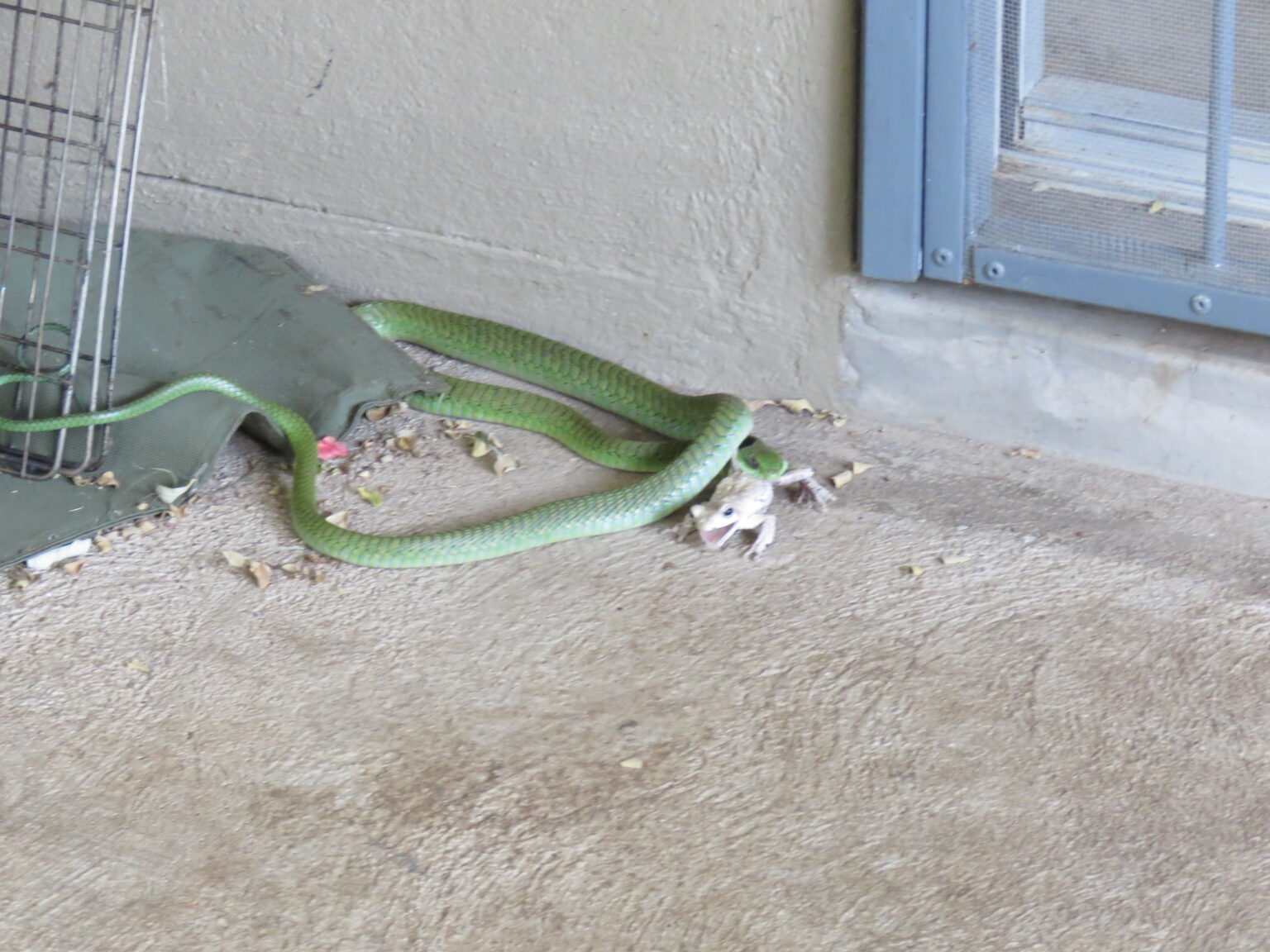
As for yesterday’s black mamba, it was only a few meters from him but fortunately slithered away in record time. The snake handlers in Marloth Park don’t want to be contacted for snakes spotted in gardens since, by the time they would arrive, the snake would be long gone,
If a snake is discovered in the house or on the veranda (as was the case in the above photo), maintaining its position, the handlers can be called, usually arriving in five to ten minutes. Tom saw no reason to call with yesterday’s sighting. But, it certainly reminded us to be more diligent than ever in examining our surroundings when walking to and from the car or anywhere in the garden.
It makes sense to scour the bedroom, checking under the bed and in closets this time of year. Snakes are more active during the hot summer months, which may continue long after we leave Africa.
Last night Tom killed a horrible-looking insect on the kitchen floor before we went to bed, leaving it near the trash can to be swept up in the morning. An hour later, I stepped out of the bedroom to get ready for bed to find hundreds of ants were carrying the insect. It was moved no less than 10 meters in one hour. If I hadn’t turned on the overhead light, I would have stepped on the mess in my bare feet.
Tom then swept it out the door and sprayed the entire kitchen and lounge room floors for ants. This morning they are all gone. Surely, more such creatures will visit us soon, whether it’s freaky insects or snakes. We hope our mongooses, who visited in the dozens yesterday, continue to stay around. They are known to keep snakes at bay since they are resistant to venom. We’ll see how that goes.
Soon, we’ll cook the two beef roasts we’re bringing to the party. The rain has stopped momentarily, the humidity and dew point are still very high, but it’s much cooler today, much to our delight.
May all of our friends, family, and readers have a fantastic and safe New Year’s Eve and new year to come. Thank you from the bottom of our hearts for sharing yet another year with us.
Photo from one year ago today, December 31, 2020



